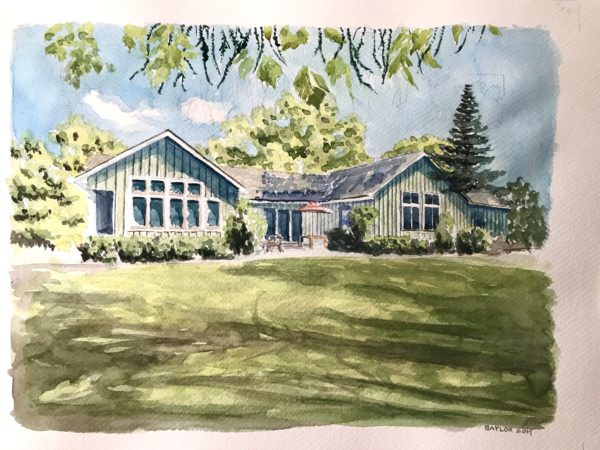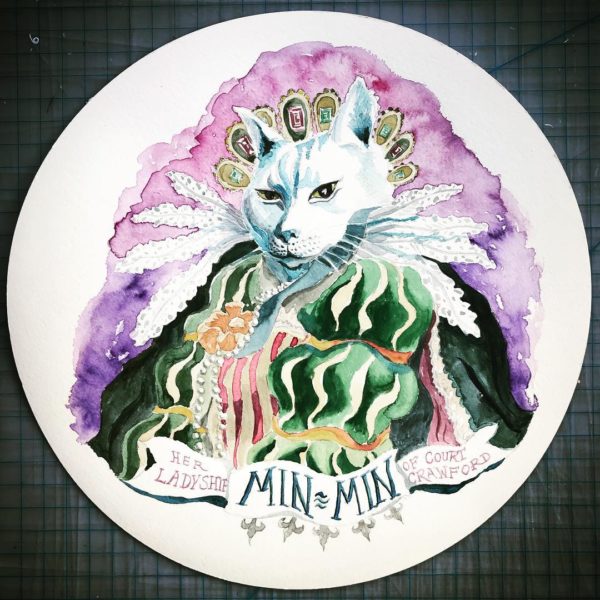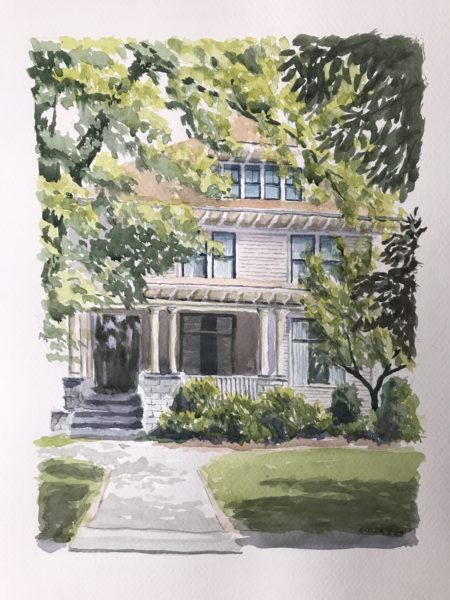
Dana Saylor — artist, historian, teacher, event planner, & community activist — is invested in her community. She came here in 2008 and we are not letting her go anytime soon.
“Buffalo was the right scale for the ability to live as an independent artist and entrepreneur. It was the right place where I felt like I could make a contribution; that the city had its challenges and I just felt like I could be a part of something here, as opposed to other places where the doorways into being a part of something were a little bit more slightly ajar, whereas here they were wide open,” she said.
“There seemed to be possibilities, here.”
Growing up, Dana was enveloped in history. “I grew up in a house where my parents were very interested in old movies and antiques and things like that, so I think that my interest in those types of things was an early inspiration from my family,” she said. She was also a student of her mother’s entrepreneurial nature, watching her succeed in several home sales companies. “I definitely get my personality and my outgoing nature from her,” Dana said.
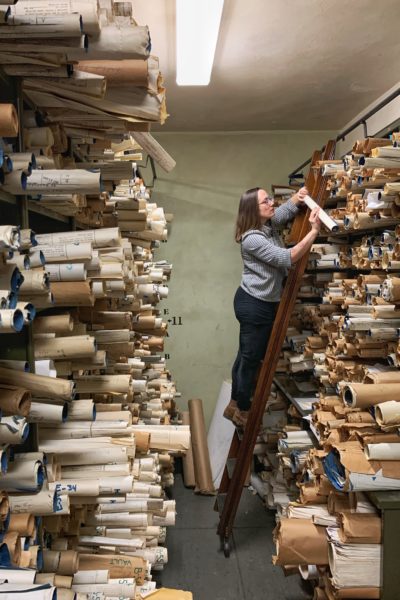
An artist, Dana went to SUNY Oswego to solidify her work. Working on a BFA in studio art, there was one professor in particular, Matthew Friday, that saw what she did.
“He was somebody whose opinion I valued a lot, and he pointed out my skill to me. ‘Do you understand that you’re a really great writer? And your painting skills are really interesting, and you’re doing so many cool things, but especially your ability to tell a story and your ability to write about the meanings of things is really strong.’ And so, from him I got a lot of confidence and from some other teachers who taught about the meaning behind paintings and the why behind why we create paintings, and why we still study these things,” she said.
“There were a lot of inquiry-type classes that I took at SUNY Oswego, that surprised me with their quality, because I grew up with SUNY Oswego in my backyard, and I was sort of snobby about it,” Dana laughed. “I actually got very lucky and I feel like I found some amazing professors there who really nurtured my skills and I learned a broad variety of things — I took everything from psychology and sociology to American history and communications…I feel like that is the value of a liberal arts education, to get that broad variety of subject matter that you’re forced into taking. It was really helpful for me in connecting the dots between subject matter and saying, ‘Well, you know, this is not only about creating art, but it’s about being a part of society,’ and I always was interested in being a part of something bigger.”
Dana traces back this love of community to her early days of living in a rural town and watching urban life via Sesame Street on the television.
“It showed me a world where people cooperate together, people met each other on the street, people were a part of one another’s lives in a kind of intimate way, and a diversity of people that I didn’t experience where I grew up. All of those things made me interested in cities, and made me interested in being a person who created work.”
Like many who pursue an artistic lifestyle, Dana assumed she wouldn’t be able to turn this passion into a living. She said that she never had a plan to be a fine artist as her full-time job.
“I was afraid, like I think that many people are sort of trained, that that’s impossible, you’ll never make a living, and that you have to have a serious backup plan,” she said.
-

-

Her Ladyship MinMin — Pet Portrait -

However, she is able to live in this world through commissioned works, which most often includes paintings of historic buildings and places and people and pets, she said.
She’s also a sought-after public speaker, due to her extensive work in preservation and placemaking. However, this aspect of her portfolio is taking a hit due to the current shutdown. “Before this all happened I did a talk on local history at the Global Concepts charter school, and I gave a talk on creative entrepreneurship at Mount St. Mary Academy. Obviously the schools are all shut down, so my talks and presentations side of my business, which I’ve actually been working on growing, ironically, has basically been shut down for the foreseeable future,” Dana said.
The shutdown is affecting other areas of her work, all of the pieces that she’s strung together to make a cohesive living.
“I do research on historic properties, so I go to City Hall and find blueprints, I go to the Surrogate’s Court and find estate records for people, I do genealogical research, and all of that is, aside from people renovating their homes, it’s kind of all discretionary spending. Not a ton of what I offer is absolutely necessary to people’s survival, unless you’re renovating a building — which also, a lot of that may be put on hold. People may be being more conservative about what they’re doing with their homes and how they’re investing because they don’t know what the future’s going to hold, so they’re unlikely to take some risks that they might have taken before financially,” she said.
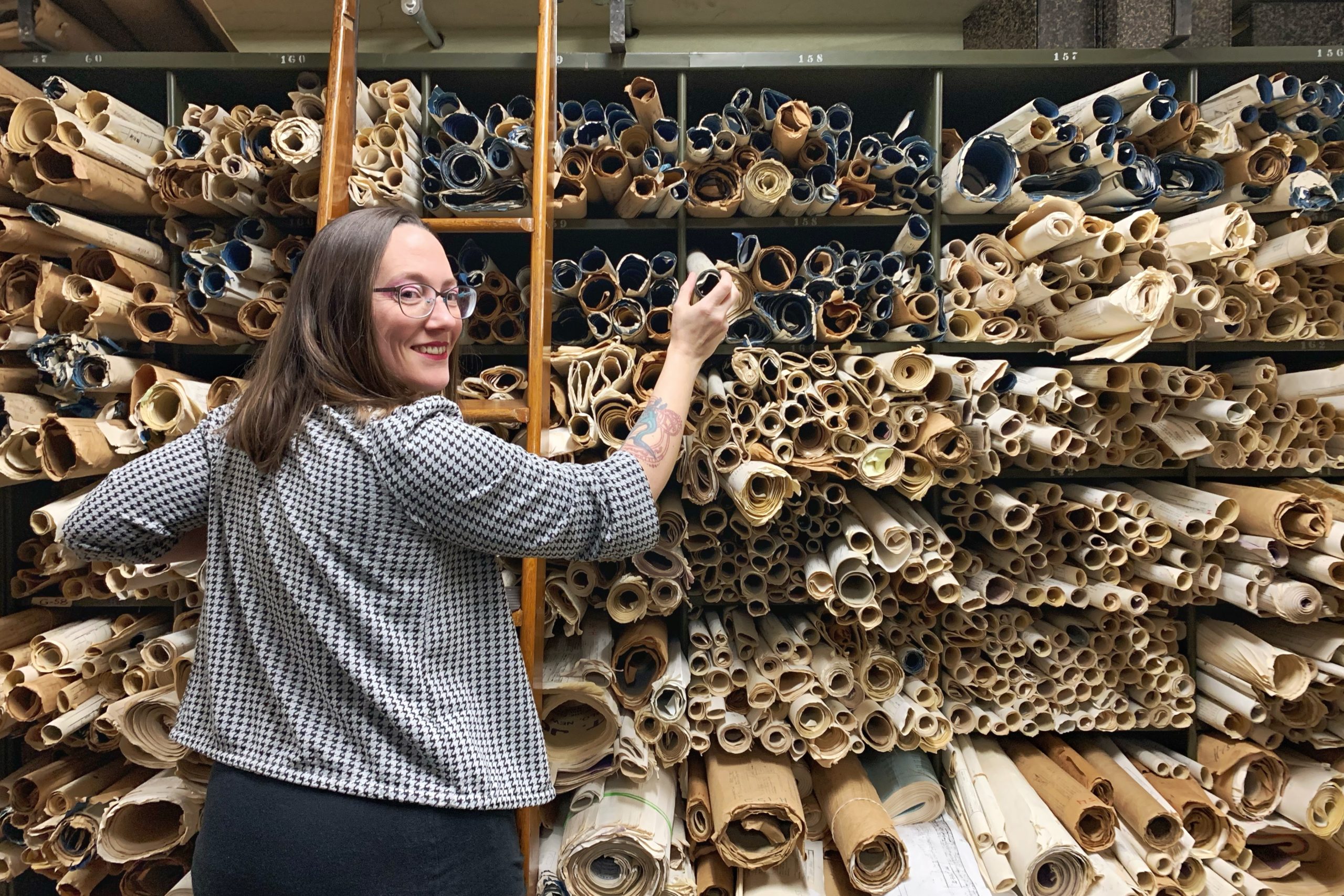
As someone who has been on the production side of several large-scale events, Dana feels these social distancing measures in a very particular way.
“For me, my lifeline is attending events, even if they’re small art gallery openings and things like that,” she said. “I feel like we start to understand the intricate threads of our economy and our society and how much gathering with people is creating this economic activity. All of these things are a part of how we exist as a country, as a world, and how our economies exist. The United States number one industry is travel and tourism, and that’s the case for a lot of places, and poof, it’s just done. People are out there visiting their state parks, but they are not paying to go to a coffee shop in Pittsburgh while they check out the Andy Warhol Museum and go to a bar on East Carson Street. It’s affecting everybody.”
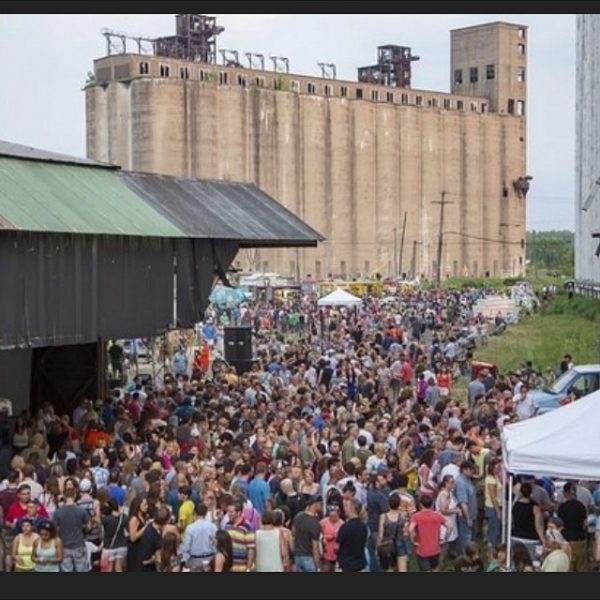
Dana was a founding member of Emerging Leaders in the Arts Buffalo (ELAB), formed in January 2010 as a chapter of American for the Arts. The organization had banded together to create chapter groups across the country to help arts and emerging professionals in the field and arts administrators to help understand best practices across the field, to find and share resources, and to help people better learn about their particular field of interest in the arts.
ELAB held monthly art critiques, meetups, and workshops, and an annual creative conversation that was a salon about different issues facing artists at the time, with ArtLab continuing as an aspect of the group that’s sort of living beyond it, Dana said. “There had been lots of cool opportunities for artists created out of that, and then City of Night came along and ate everything else,” she laughed.
City of Night, a large-scale arts event held at Silo City for the first three years, from 2012 to 2014, and in the Old First Ward in South Buffalo in 2015, was the major output from the ELAB group. “It went great, and it sucked up a lot of our resources, but also made us resources. We saved any proceeds from the event and used them for other programming, so it was great and challenging to figure out who we were after that,” she said. “We started to all feel very burnt out after that. Most people don’t realize this, but City of Night was a 100 percent volunteer effort.”
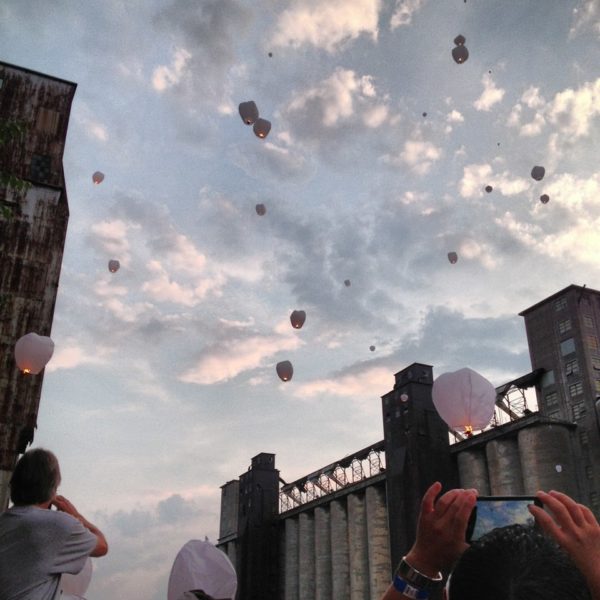
The first year 3,500 people attended, much to the amazement and shock of the group. It ballooned the next year to 12,000. The third year was estimated to have hit 17,000. And at their peak they had 60 installing artists.
“All these different connections got made, that were super cool, and people learned about people’s music, and art… talk about cross-pollination. People felt inspired by it, and a bunch of different groups came and asked us for tours of the grain elevators while talking through how we came up with this particular concept,” she said. The National Trust for Historic Preservation even asked Dana to be an adviser after that first year.
“It was fun and amazing, but also very nerve-wracking…When you hold an event at a large, vacant grain elevator complex, it can be… a lot.”
The group disbanded in 2018, having seen most of the members “E’ing” out of the program. “Most of the members of the group had moved onto other projects or were having families and buying homes and were established a bit more in the community as artists,” Dana said.
It was 2012 that Dana experienced a dramatic pendulum swing in her burgeoning career. “I had just had one of the most crushing defeats and one of the most wonderful successes of my early career as a historian artist and preservationist in Buffalo,” she said.
“In March of that year, the conclusion of my efforts in a group to help preserve the Bethlehem Steel administration building resulted in it being demolished,” she said. “We were all so sad, and so upset, and just heartbroken after all of these efforts for months and months and months in the community, and then City of Night happened that summer…Then the National Trust had their conference, and they had me come and talk along with some other leaders in communities across the country who were doing interesting, crazy stuff,” she said.
How people emotionally connect with subject matter or a place is what makes or breaks it.
“After that, they invited us to become advisers, because they were looking for the voices of people who were trying to reclaim vacant places and do some interesting stuff and different kinds of programming. So that opportunity arose in a year of extraordinary loss and failure for me professionally. It was a year of highs and lows,” she said.
Because of Dana’s work co-producing City of Night, much of her public speaking has focused on throwing large-scale events in vacant places.
“The talks that I gave in prior years have largely been about how to throw a large event at a vacant place, but even kind of a bigger, 10,000 foot view of that is generally what I title, “Emotional Connection to Place” — how to create emotional connection with place and the various communities these places serve, and how doing that will set the stage for revitalization, and all the types of things that these community boosters want to see happen,” she said. “So, if you are a small organization in one of the canal towns across New York State and you’re trying to get more visitorship, what you need to focus on is emotional connection to place. If people feel something when they go to your place, or they feel something when they look at a photo of your place and then that makes them want to go there, whatever it takes, that’s really the secret sauce. It’s making people feel something, and giving them a story to belong to. Those are some of the things that I have addressed with groups. And sometimes it’s more about the nitty-gritty of how you do that, and sometimes it’s more about the general idea of it.”
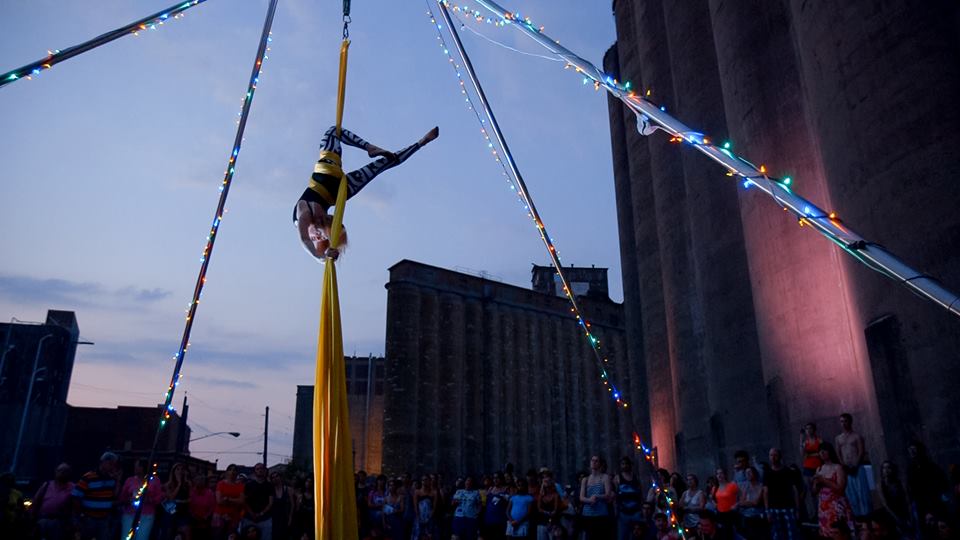
This downtime is helping Dana refocus the discussions, to hone in on how people and places connect.
“Moving forward, some of the things I want to give more talks about include how culture and heritage can be good for your emotional well-being, and we see that right now…the effect of arts, culture, and heritage on well-being and mental health,” she said. She’s also been pondering the phenomena of fandom — how to understand people’s extreme loyalty for a cultural experience and have it translate to a different, yet essential, cultural experience.
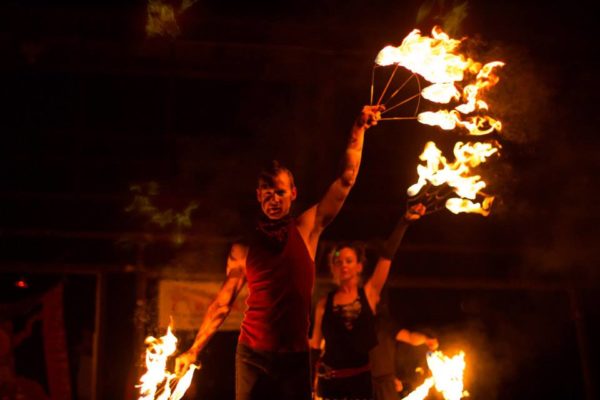
“Why is the Bills stadium packed, and the Albright-Knox can only get 500 or 1,000 people? It’s good, but still not the 70,000 people that the Bills stadium gets,” she said. “I researched some issues around fandom and why people become sports fans, and what makes them do that, and again, it’s all about that emotional connection. How people emotionally connect with subject matter or a place is what makes or breaks it. I’m looking forward to getting back to being able to do some talks about that.”
After the shutdown is lifted and life resumes in whichever way it will, Dana looks forward to working more within her own state.
“I’m very interested in collaborating more across New York State, I’m very interested in telling the story of New York State as a whole,” she said.
“I’m very interested in doing more work that connects these dots across the whole state and saying, ‘How can the smaller towns like the ones I come from benefit from some of the things that I’ve learned? How can I help communities embrace Main Street policies that revitalize Main Streets and bring people back?’ It’ll be very interesting I think, also with this current crisis, for people to refocus on the small businesses that really are the meaning in their community, and I think that everyone will be really, really sick of shopping online and doing everything online, and will start saying, ‘Where can go talk to a human, or ask a person for some help in guiding me towards the right product that I need?’
“There’s a lot of possibility, but I feel like, for me, my skills can be best used in connecting people and resources and sharing what I’ve learned and what I’ve observed…I see a lot of those different intertwining threads, and someone’s going to need to stitch those.”
Get connected with Dana via her website, her Etsy page, where she’s selling coloring books featuring the buildings of East Aurora, and on Facebook and Instagram.
